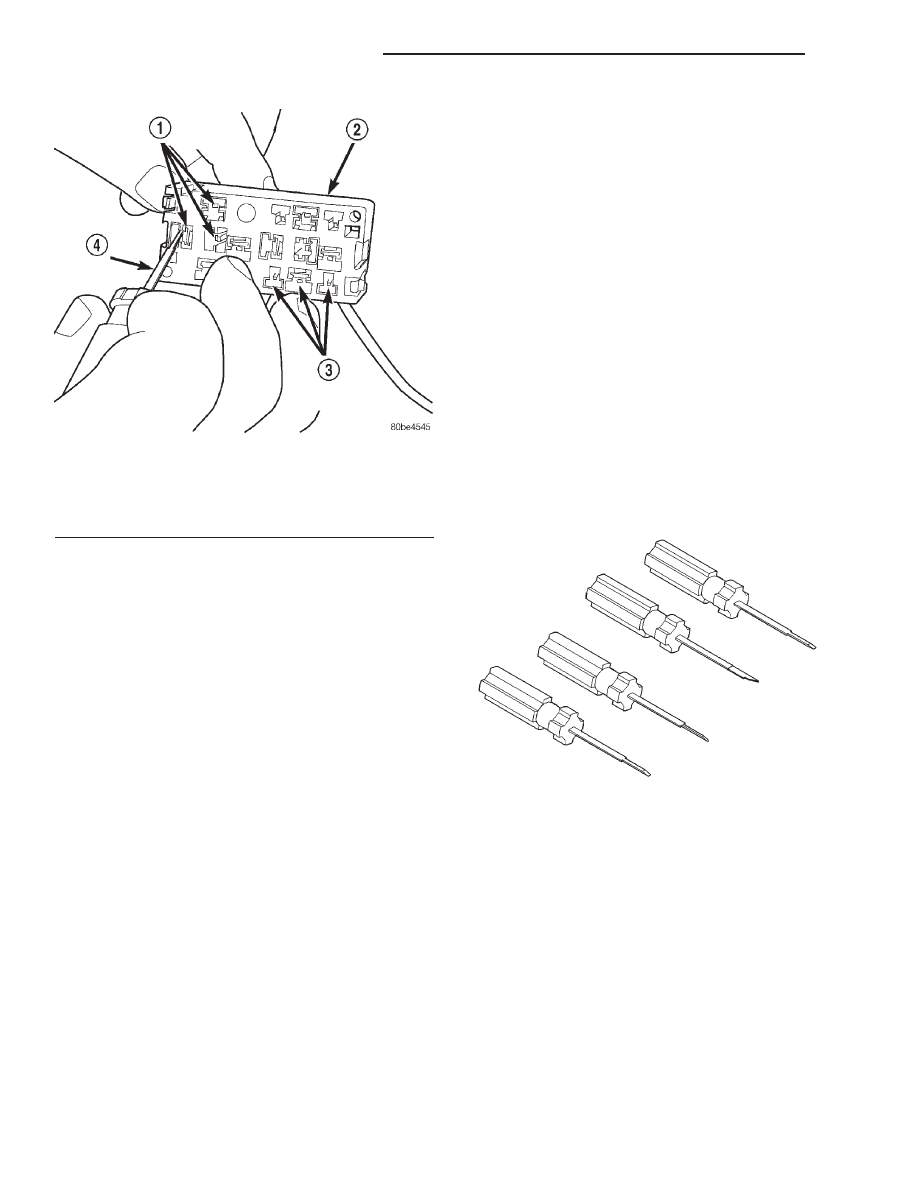Jeep XJ. Manual - part 141

PDC RELAY WEDGE
(1) From the top of the PDC housing, align and
insert the PDC relay wedge latch arms into the cor-
rect cavities in the relay cassette.
(2) Gently and evenly press the PDC relay wedge
down into the relay cassette until both of the latches
are fully engaged.
(3) Install each of the removed relays into the
proper cavities of the PDC relay wedge.
(4) Install the PDC housing lower cover.
PDC HOUSING LOWER COVER
(1) Align the PDC housing lower cover to the bot-
tom of the PDC.
(2) Press the PDC housing lower cover gently and
evenly onto the PDC until each of the latches that
secure the cover to the PDC is fully engaged.
(3) Engage the mounting slots on the PDC housing
with the stanchions of the PDC mounting bracket
and push the unit downward until the mounting
bracket latches fully engage the mounting tabs on
the PDC housing.
(4) Install the battery wire harness PDC take out
eyelets over the PDC B(+) terminal stud.
(5) Install and tighten the nut that secures the
eyelets of the battery wire harness PDC take outs to
the B(+) terminal stud. Tighten the nut to 10.8 N·m
(95 in. lbs.).
(6) Install the B(+) terminal stud cover onto the
PDC.
(7) Install the cover onto the PDC.
(8) Reconnect the battery negative cable.
SPECIAL TOOLS
POWER DISTRIBUTION SYSTEMS
Fig. 15 PDC Relay Cassette Terminal Remove/Install
1 – TERMINAL CAVITIES (TYPICAL)
2 – PDC RELAY CASSETTE (TYPICAL)
3 – TERMINAL LATCHES (TYPICAL)
4 – FROM SPECIAL TOOL KIT 6680
Terminal Pick Kit 6680
8O - 10
POWER DISTRIBUTION SYSTEMS
XJ
DISASSEMBLY AND ASSEMBLY (Continued)